March Madness most commonly refers to that pretty big NCAA basketball tournament that catches our attention for a few weeks, but it can also describe this time of year in college admissions. The last two weeks of March is generally when most colleges send out their decision letters to anxious, yet hopeful seniors, dreaming about celebrating acceptances to their top choices. However, over the years, as more and more students apply to colleges with the ease of the Common Application and Coalition, not to mention an increase of international students, many colleges have become much more competitive. Schools that would have been a slam dunk admit in years past, are becoming as tough to get into as sinking a half court shot.
Because of this, and looking towards the future, knowing that it will most likely continue to become more and more selective, it is essential to find colleges that are less selective, but still have everything you need in a college to be happy. When crafting a college list, it is ideal to have about 8-10 schools on there. Of those schools, at least three of them should be schools that you are certain to be accepted into...but you would love to attend! In today's world of college admissions, schools that may be in your target range or those that are reach schools, are becoming less and less likely to work out. It is not because you aren't a great student and super involved...it is purely a numbers game. Colleges are receiving thousands and thousands of additional applications than in years past...but still accepting the same amount of students, therefore, driving down admissions rates.
In addition to securing three "likely" schools, always remember to show every college you apply to some love. Make sure their admissions counselors know you would absolutely love to attend, and give them some school-specific reasons why their college is the best fit for you. Really showing your interest could help in the end, especially if you are a borderline admit. With all of this said, I want to share with you the most recent admissions statistics for 2018 at a handful of schools. Although the colleges range in selectivity, one thing you will notice is that all of their applications are going up and their admissions rates are going down:
Boston College: This year, BC received over 31,000 applications for just 2,300 freshmen seats. This is an increase of 9% in applications, and they offered admission to just 8,400 applicants, which decreased their admissions rate to 27%. Their average SAT score for admitted students was a 1448 and the average ACT was a 33.
Duke University: This year, Duke received 33,300 Regular Decision applications, just about 3,000 more than last year. They hope to admit about 2,400 of these applicants, which represents a 7% admit rate...whereas their Early Decision admit rate this year was 22%.
Georgetown University: Last year, Georgetown had about 21,000 total applications...but this year that number increased to 23,000, and 3,312 of those students were accepted, representing a 14% admit rate.
UNC-Chapel Hill: UNC received a school record 43,000 applications this year, which is up from 6% last year.
Northeastern University: Northeastern, who continues to amaze us with their numbers, received over 62,000 applications, and will be offering admission to just 19% of their applicant pool.
Providence College: Providence College received just over 11,400 applications this year, and will be admitting 48.9% of those students. 34% of the Class of 2022 has already been enrolled to PC through Early Decision I & II.
University of Richmond: Richmond has their largest and strongest applicant pool in university history, with nearly 12,000 applications. Of those applicants, only 29% were accepted...who boasted a middle 50% SAT of 1360-1490 and ACT of 31-34.
Villanova University: Villanova isn't just dominating the NCAA tournament, they also had their best year ever in college admissions. They had a record high number of applications, with 22,727, which went up 7.65% from last year. For the first time ever, they offered Early Decision, and 24% of their freshmen class will be coming in through ED. The overall admit rate was 28%, which is down from 43.2%, from just two years ago! Their middle 50% for the SAT was 1380-1490 and for the ACT was 32-34.
Virginia Tech: Virginia Tech saw a historically large and competitive applicant pool with over 32,000 students applying for just 6,200 available freshmen seats. Although the last few years, VT's admissions rate was around 70%, this year it dropped to 56%.
Wesleyan University: Wesleyan received 12,788 freshmen applications, which is the largest number in school history, a 3% increase from last year. Just 1,779 were offered admission, just a 14% admit rate.
Joseph D. Korfmacher
College Spotlight: St. Bonaventure University

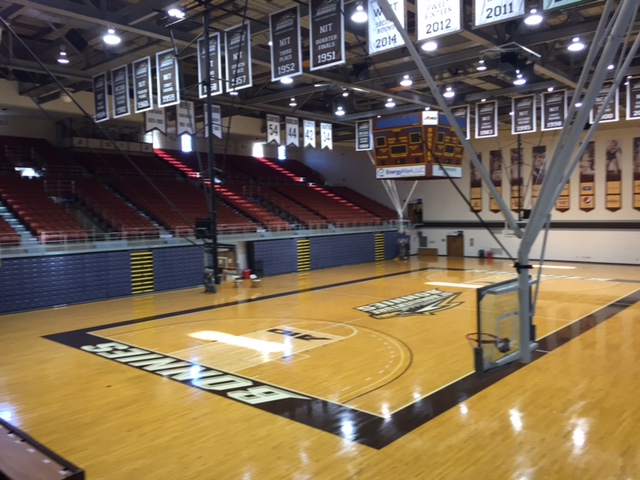
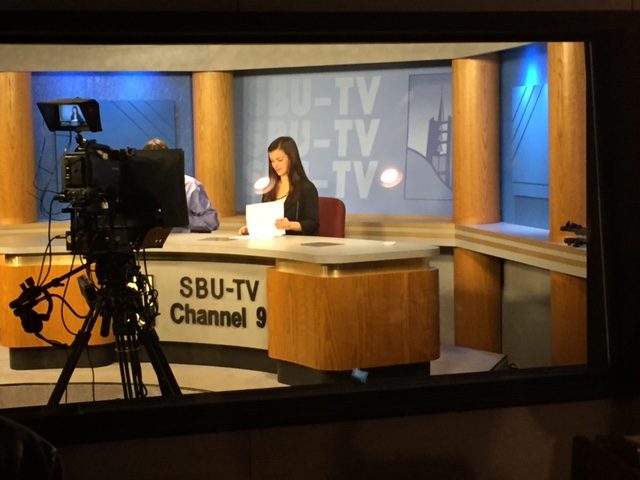
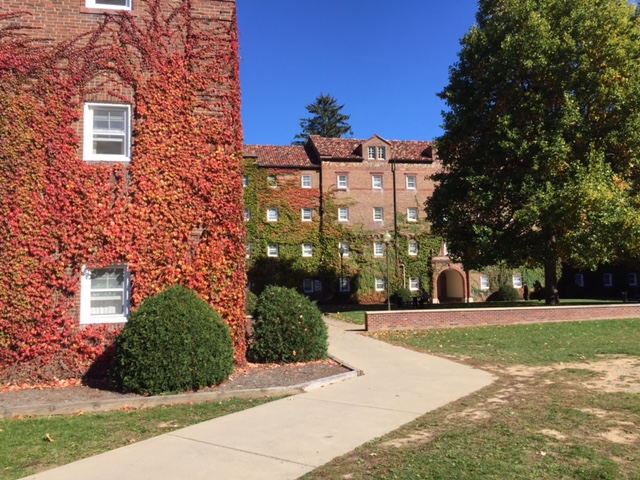
Last Friday, I was fortunate enough to visit St. Bonaventure, in up-state New York. I will give my opinion on the school later in the post, but I wanted to jump right into the facts and figures about St. Bonaventure, so enjoy!
Academic and General Information
St. Bonaventure is a Roman Catholic, Franciscan school of about 1,800 undergraduates, in an absolutely pristine part of our country (yes it will snow there in the winter, but it is actually not in the snow belt, so not as much as you would think). The campus is vast, with a ton of green space and trees all around the perimeter. It is a different world there compared to New York City, but for many people, this is a welcomed change of pace. Walking around campus, students were happy, kind to others, and seemed to just slow down a bit...they were taking in the beauty of their surroundings, and were focused on their academics and involvement in school activities.
Academically, St. Bonaventure has four main colleges: School of Arts and Science, School of Business, School of Education, and the Jandoli School of Journalism and Mass Communication.
The School of Arts and Science at St. Bonaventure holds their most popular major, biology, as well tons of other majors and minors. Other highlights in this college include the ability to receive a BA or BS in psychology, very strong computer science programs, the ability for students to create their own individualized major, and a core course that all students must take called the Intellectual Journey focusing on St. Bonaventure. This college is extremely writing and oral communication intensive and starting next year, the college will offer a BS in Cybersecurity, which will have an emphasis on both the technical and managerial sides of the cybersecurity field and will prepare students for careers in business, government and law enforcement.
School of Business at St. Bonaventure is extremely strong, and is what we see many of our students at Xavier going there to study. They have a brand new business center, that was designed to place students in a professional setting right away, and it is beautiful! They offer extremely strong majors in most business related areas including accounting, finance, and marketing...they also have a sports management minor. Class sizes are small, and the professors are extremely caring and work closely with the students. This is probably a big reason why they have a 90% retention rate for students in the school of business (86% overall in the university), which is very high! They are also focused on outcomes, and most business majors have required internships for their students, and most students also do outreach and service.
The School of Education at St. Bonaventure offers majors and certifications in elementary education, special education, and early childhood education, and students can actually receive all three certifications in their 4 years. Additionally, they offer a major in physical education and concentrations in sport studies and childhood studies. These concentrations are great for students who are interested in these areas, but do not necessarily want to become teachers. Finally, St. Bonaventure offers a great program in secondary education, where students can major in their subject of choice (i.e. English, History, etc.) and graduate with their certification in secondary education.
Finally, the Jandoli School of Journalism and Mass Communication was a very nice surprise. I did not know much about this program before my visit, but it is very strong and popular among students. 20% of the undergraduates are in this college, and their television and broadcast programs give students every opportunity to succeed. They have their own studio and broadcast truck, and students are working on professional equipment, as early as freshmen year. They also produce their own news show every Friday, which is seen around the local area.
Admissions and Honors Program
During my time working with students going to St. Bonaventure, they have been extremely kind with acceptances, and with their scholarships/financial aid. Their overall acceptance rate is just under 80% with an average GPA of 3.12 and middle 50% for ACT 21-27 and SAT 1400-1750.
For their total cost of attendance, they are under $43,000, which is incredible for private schools today. That is before scholarships and financial aid, which they do offer a lot of as well.
Finally, they do have a Honors Program at the university, and requirements for entry include a SAT of 1200 and high school average of 90...students must also maintain a college GPA of 3.25 each semester. More information on this program can be found at www.sbu.edu/honors
Overall Impression
So I cannot express this enough, I love everything St. Bonaventure is about. This is a strong, supportive community of administrators, faculty, and students who are there to prepare for a successful future, but are there for each other as well. Students hold doors for each other, they smile and ask how your day is going, but at the same time, they are focused on their academics, and work hard to do well in the classroom. Students are also very involved in the school. I asked my tour guide about extracurricular involvement, and she said most students do at least 3 or 4 different activities.
Also, school spirit is huge there! Although small, they are a division 1 athletics college, competing in the Atlantic 10 conference. Their basketball games are a must see event, with the entire community attending, rooting their Bonnies on.
Finally, St. Bonaventure is just a school and community with good values. Yes, their network is expansive, where graduates are getting competitive jobs all over the country, but their mission is to form the entire person during their four years there...and this is something I can tell you they do very well.
Joseph D. Korfmacher, MA
Student Accepted to All Eight Ivies -- and Why He Turned Them All Down
As a reader of the JDK College Knowledge blog, you know that our mission is to help each student find the school that is right for him or her based on a number of factors, including academic offerings, social scene, cost and more.
Yesterday, MSNBC's Morning Joe featured Memphis high school student Ronald Nelson who was recently accepted to all eight Ivy League schools - and then turned down the opportunity to attend each one. In the interview (see video above), Ronald says that receiving his many acceptance letters was "just the next step in my analysis to figure out where to get the best education possible while making sure that it's financially reasonable for both me and my family." He went on to say that he was not only accepted into a "wonderful honors program" at the University of Alabama, the school he ultimately chose to attend, but also received generous financial aid awards - both important factors into his decision-making.
In this case, Ronald will be avoiding "massive debt" (host Joe Scarborough's words) by selecting a state school over the private Ivy League schools. In many similar cases, students can make the decision to go to schools where they may be offered more financial aid without compromising academic rigor. Given the 2,500+ colleges and universities across the United States, it can pay to look beyond rankings and reputation to find a quality education at reduced cost.
College Spotlight: Fairfield University
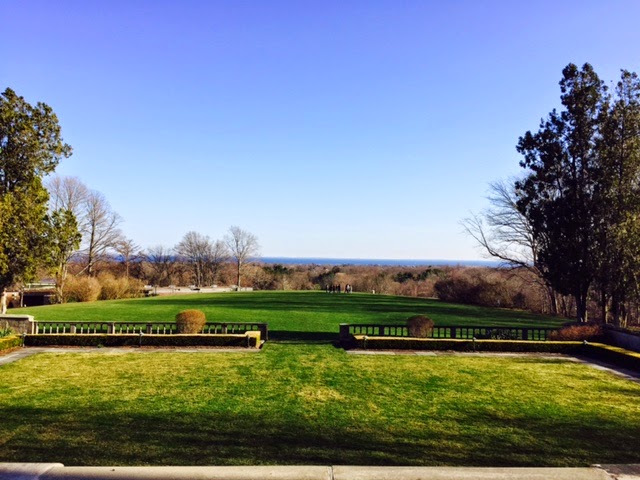
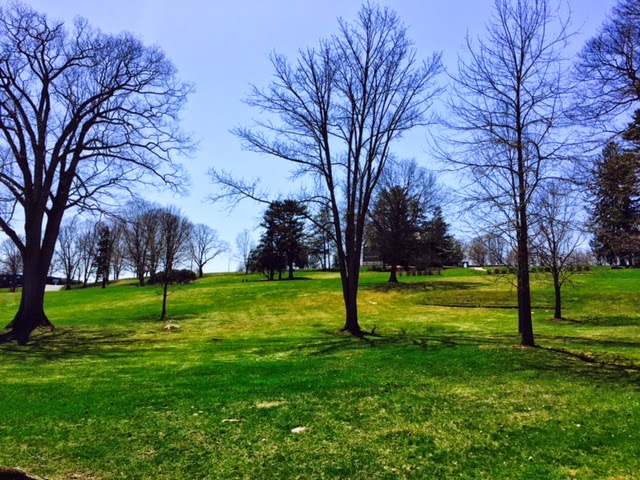
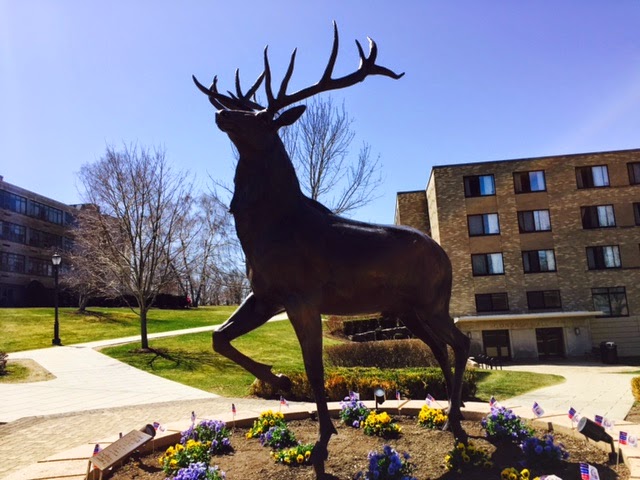
General Information
Another stop on my recent northeast college tour was Fairfield University, located in Fairfield, Connecticut. Fairfield is a private, liberal arts school with just under 4,000 total undergraduates. It is located on a lovely campus with views of the Long Island Sound. The 200-acre campus is in the suburbs, but students are only minutes from city life and the beach, and only about 90 minutes from New York City. The campus has green rolling hills throughout, which creates a perfect place for students to study, throw the frisbee, or just take a nap. When I was there, I even saw the archery club setting up for a practice. Also, it's hard to miss the turkeys that call Fairfield's campus home throughout the year, so be on the lookout if you choose to tour the school.
Fairfield University is one of the 28 Jesuit Universities across the country, and focuses on developing "the whole person" while establishing a sense of community for everyone there. The academics are strong and community service/helping others is an important part of life for Fairfield students. The vast majority of students on campus are from Connecticut and neighboring states, but Fairfield draws students from across the country and all over the world.
Academic & Admissions Information
The total cost of attendance at Fairfield is $58,625, which is high, but fairly common among private universities. However, four levels of scholarships are offered: Magis - $25,000, Bellermine - $17,000, Loyola - $13,000, and Xavier - $7,000. If covering the tuition is a concern, they are advised not to apply Early Decision. They are a test-optional school, meaning students do not need to submit test scores for admission (last year 30% of applicants applied Test Optional), and interviews are recommended for applicants. This past year, Fairfield had a 63% admission rate and right now the male to female student ratio is 37:63 and is looking to enroll a bigger percentage of males in years to come. The averages for accepted students are: GPA: 3.4; SAT: 1150; and ACT: 26. Demonstrated interest in attending is also a factor in Fairfield's Admissions' decision-making.
Fairfield University offers 41 majors and has the common ones that most students are familiar with. Their four main colleges are the College of Arts and Sciences, Dolan School of Business, School of Engineering, and the School of Nursing. At Fairfield, the majority of classes will be small, and students are guaranteed a hands-on learning experience and close relationships with their professors.
Fairfield University has always been a popular college for students on the east coast, and after visiting and learning more about their academics and community, I can see why it is a common destination. This is a great place for students who want to go away to college without being too far and have access to a beautiful campus and access to nature (hiking trails, views of the Long Island Sound, beaches, woods are all nearby). Students will be pushed academically, but supported throughout their time at Fairfield.
As always, happy searching!
-Joseph D. Korfmacher
Upcoming Selective College Information Sessions
I wanted to alert everyone of two upcoming information sessions from a few selective colleges.
1) Brown University, Columbia University, Cornell University, Rice University, and the University of Chicago will be hosting a joint info session in Manhattan and White Plains on Sunday, May 31st and in Long Island on Monday, June 1st. To register, please go to the following link: http://www.exploringeducationalexcellence.org/
2) Dartmouth College, Northwestern University, Princeton University, University of California-Berkeley, and Vanderbilt University will be hosting a joint info session at the Melville Marriot Long Island on Tuesday, June 2nd from 7-9 pm. To register for this event, please go to the following link: http://www.coasttocoasttour.org/
As always, happy searching!
Joseph D. Korfmacher
College Spotlight: Vassar College
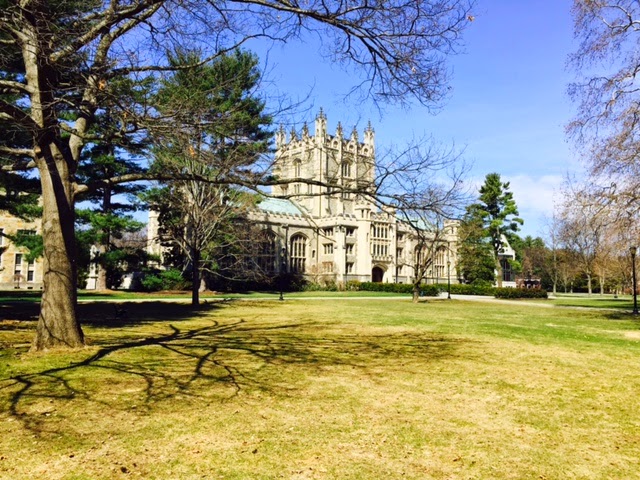
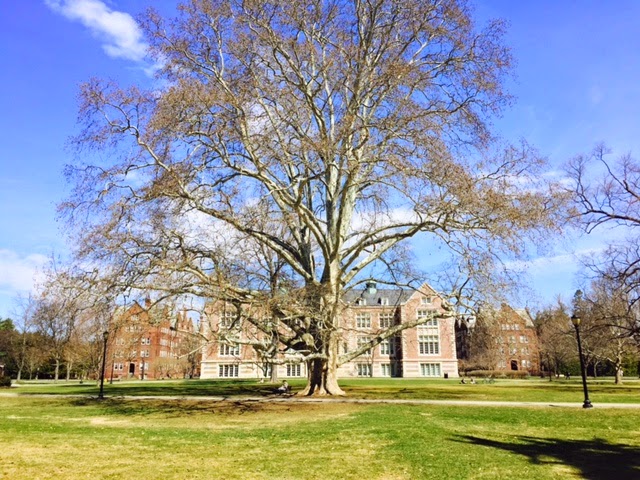
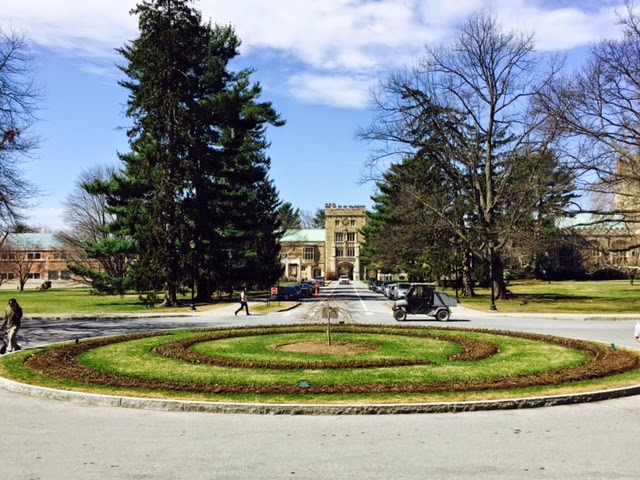
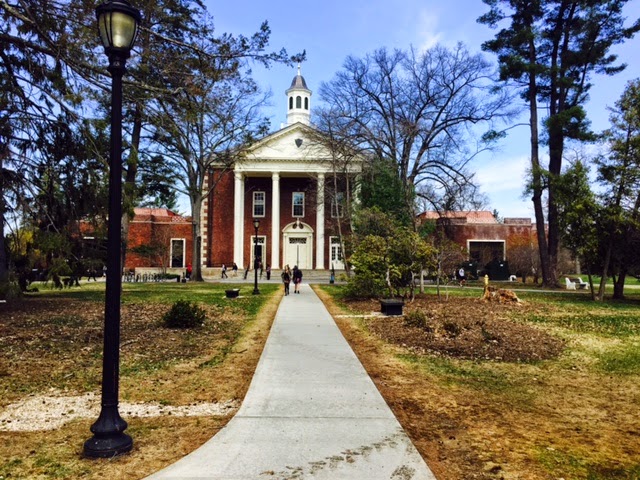
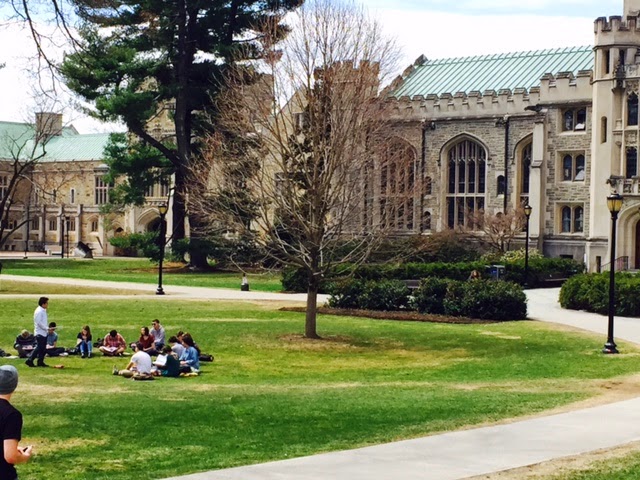
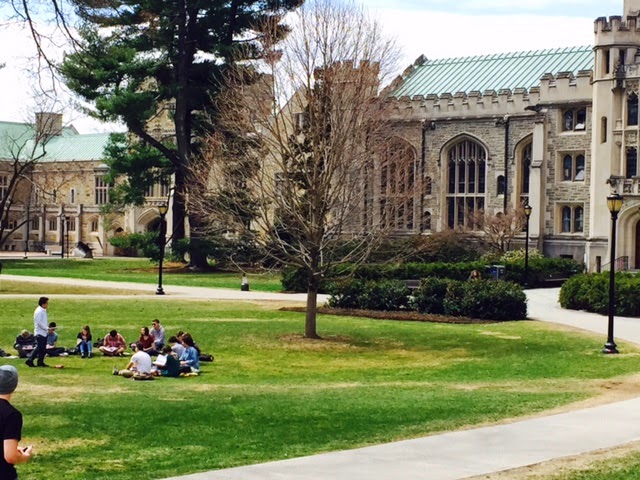
General Information
One of the stops on my college trip was also in Poughkeepsie, NY at Vassar College. The school has an absolutely beautiful campus with tons of space and architecture that just screams "college!" Vassar is a small liberal arts school with just under 2,500 undergraduate students. It was originally an all-women college, but went coed in 1969. It is a liberal campus with students from many different backgrounds. While walking the campus I was impressed with the immense diversity throughout the campus, which was great to see. In fact, Vassar was recently awarded $1 million for being the most socio-economically diverse college in the country.
Devoting over $60 million each year to financial aid, the average aid package per student is $40,000. And any student that comes from a home with total income under $60,000 is given financial aid packages that do not include loans.
Academic Information
Vassar College is very much a liberal arts college and they have an open curriculum, many students can take any classes they want across all disciplines. Overall, there are 51 majors offered in Arts and Humanities, and the Social Sciences. Students are encouraged to take a foreign language and Vassar basically offers any language you could think of. Also, more than 60% of the students have more than 1 major. There is also a very large art presence on campus, with many people involved in different types of art, including the performing arts. There are numerous plays that are put on by the students each year. Many of the professors at Vassar live on campus in the student housing. The housing is unique at Vassar, with the majority of students living in the same house on campus for the first three years. 98% of students live on campus all four years and there is a very large Catholic community on campus, with Catholic mass being held once a week.
Admissions Information
Vassar offers Early Decision, Early Decision 2, and Regular Decision. A good amount of their students (48%) are accepted through Early Decision. There are about 670 students per class, and they have about a 23% acceptance rate, which makes it very competitive. Their middle 50% of the SAT is 1340-1460, ACT is 30-33, and the top 5 states Vassar draws from is New York, California, New Jersey, Massachusetts, and Connecticut.
Overall, Vassar College is a very special place drawing some of the most liberal, academically-driven and diverse students from across the country. While Vassar is definitely not for everyone, if you are someone who wants the small school feel, personal attention from professors (some of whom live in dorms), and a place where you can take a variety of courses , Vassar may be a place you want to check out.
Joseph D. Korfmacher
New Medical School Partnership with Seton Hall University
In an email sent from Seton Hall's President, Dr, Gabriel Esteban, he estimates that by 2020, there will be a shortage of 2,500 physicians in the Garden State. He goes on to state that "HackensackUHN and Seton Hall's joint venture to create a premier academic institution will help combat the physician shortage by providing key educational, research, and career opportunities to incentivize the next generation to pursue a career in medicine". It is Dr. Esteban's hope that the future school will be "committed to educational and healthcare excellence, cutting-edge research, high quality care, and the advancement of medical and health science educational imperatives".
This is a fabulous opportunity for individuals looking to go into the medical field and stay close to home. Please follow Seton Hall's progress with this new medical school, which should open in the next 3 years.
-Mr. Joseph D. Korfmacher
The Real Reason College Tuition Costs So Much
The New York Times Opinion section recently featured an article on the (astronomically) rising costs of college tuition. Entitled, "The Real Reason College Tuition Costs So Much," you'll discover that cuts to public funding for higher education are NOT to blame. One culprit cited in the article: "constant expansion of university administration. According to the Department of Education data, administrative positions at colleges and universities grew by 60 percent between 1993 and 2009, which Bloomberg reported was 10 times the rate of growth of tenured faculty positions."
It's an interesting read and I hope you enjoy.
NYT Article on Surviving College Admissions
I wanted to share with you this very powerful and well-written New York Times article on college admissions at the most selective colleges and how this can be a damaging process to students across the world, but it doesn't need to be. It explains how ridiculously competitive it is to gain admission to the top colleges in the country, but how students should not feel as if they have to attend the top 25 colleges in order to be successful. It shares personal stories about young men and women who were denied admission to the most selective colleges, went on to "second tier" schools, and were extremely successful at school and in their careers. These students turned the rejections into a learning experience and propelled them into taking full advantage of all of the opportunities that the school that did accept them offered.
I personally am a strong believer in finding the right fit of a college for each student, and the name of a college really does not mean much to me. Students should strive to find a place where they will feel comfortable and that will give them the chance to be happy and successful. Students don't necessarily need to go to the Harvards and Stanfords of the world to be happy or successful. I urge you to read through the entire article, and the end offers a great story of what two parents did for their son during the application process. The article can be found here, on the New York Times website. Enjoy!
-Joseph D. Korfmacher
Senior Testimonial and Advice for the College Application Process, Part 4
I asked a number of Class of 2015 seniors to write about their experiences with the college process. This next one is by William Hatheway of NYC. Enjoy!
The college process is a very exciting and important part of high school. It is necessary to spend the time on it because it does decide the next, very pivotal, four years of your life. It is a time-consuming process, but it is well worth it in the end.
For students just starting the process, it is never too early to start the process. I would also say to just research colleges based on what you’re interested in studying. Colleges that you’ve never heard of might make it to your final list as they did on mine. You’ll be surprised how many schools are out there that have what you’re interested in, so just research all of the schools and add them to your list. Do not dismiss a school because it may not be ranked high, or not hard to get into. It is not so much about the name of the school, but rather about finding the right fit for you.
The most difficult part of the process is filling out all of the applications. They are very time-consuming and often require much thought and care. Essays and supplements deserve their due diligence because they can really make or break your application. This is the chance to set yourself apart from the rest of the applicants by showing your true voice and interests. Be personal with the supplements and appeal to what the specific school has to offer because this shows much more of a genuine interest in each school.
Visiting schools is very important because it shows a strong interest to the school, and you can really get a feel for the school to see if you truly like it. There is no point in applying to schools that you wouldn’t want to go to, so get out there and experience the schools for yourself. I visited schools throughout the spring and summer. I wrote draft essays over the summer, which I highly recommend doing because it frees up a lot of time when school starts. I finalized my list in September and started to work on all of the applications on the Common App. I worked during my free periods, which was very useful because I did not end up having to do much at home. Take advantage of all of the free time you have, and use it constructively. It will be worth it in the end.

